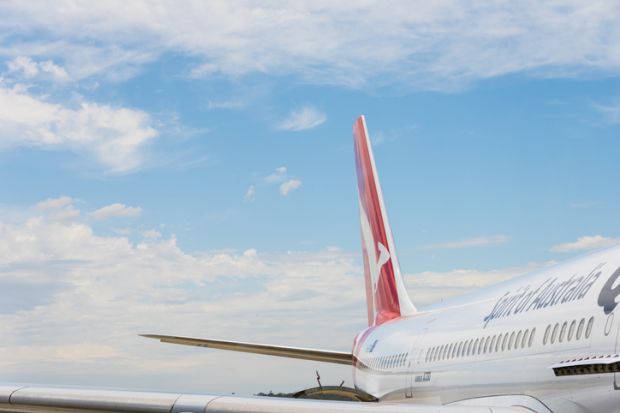Overseas student arrivals since the removal of Australia’s border restrictions remain well below pre-pandemic levels, despite a recovery in international commencements at the country’s universities.
An influential ratings agency has maintained its “slight negative outlook bias” on the universities it monitors. “The pipeline effect from student intakes disrupted in recent years continues to depress revenues,” said Rebecca Hrvatin, an analyst at S&P Global Ratings.
“Student flows into Australia have slowly resumed after nearly two years of border closure but are down almost 75 per cent from pre-pandemic levels. This is encouraging [but] it will take some time for student flows to return.”
She said this was particularly evident in February, “typically the busiest month” for student arrivals. Fewer than 43,000 foreign higher education students jetted into Australia that month, barely one-quarter of the 153,000 who arrived in February 2019.
January was similar with under 22,000 arrivals compared to more than 53,000 in the first month of 2020, before Covid border restrictions kicked in.
Federal education department figures tell a different story, with almost 56,000 foreigners starting higher education courses over the first two months of the year. This is almost double last year’s figure of 30,000, and barely below the pre-pandemic tally of 58,000 in 2019.
However, figures for March, when many university courses start, are yet to be released. And the commencements include students who remain stranded offshore – particularly in China, where borders remain closed.
So far, the recovery has been particularly strong from prominent markets including Nepal, Vietnam, Hong Kong, Malaysia and Indonesia. More students from these countries started higher education courses than at the beginning of 2019.
But the recovery has been muted from the key markets of China and India, with commencements down 10 per cent and 25 per cent respectively. Geopolitical tensions between China and Australia and Covid lockdowns in China could be depressing flows from the country, Ms Hrvatin said.
She predicted a “split within the sector, as more prestigious universities soak up the smaller number of Chinese students”. This could cause some universities to “double down” on commitments to seek new markets, with the sector’s “overexposure” to China long recognised as a danger.
“We see Australia-China tensions as a key downside risk that could structurally weaken Chinese student demand,” she said. “Nevertheless, Australia benefits from some advantages in terms of cost, proximity and lifestyle.”
Register to continue
Why register?
- Registration is free and only takes a moment
- Once registered, you can read 3 articles a month
- Sign up for our newsletter
Subscribe
Or subscribe for unlimited access to:
- Unlimited access to news, views, insights & reviews
- Digital editions
- Digital access to THE’s university and college rankings analysis
Already registered or a current subscriber? Login








